Related Research Articles
Elaine Brown is an American prison activist, writer, singer, and former Black Panther Party chairwoman who is based in Oakland, California. Brown briefly ran for the Green Party presidential nomination in 2008.

Julia Clifford Lathrop was an American social reformer in the area of education, social policy, and children's welfare. As director of the United States Children's Bureau from 1912 to 1922, she was the first woman ever to head a United States federal bureau.

Constance Baker Motley was an American jurist and politician, who served as a Judge of the United States District Court for the Southern District of New York.
Rosemary Dempsey a noted American Activist, has served many roles in second wave feminism, civil rights movements, and anti-war protests. Her most notable positions were Vice President for Action of The National Organization of Women (NOW) starting in 1990 and Director for the Center for Reproductive Law and Policy.
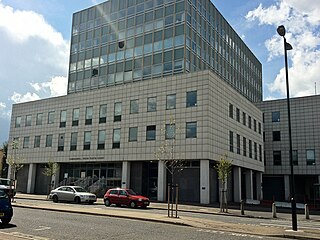
A juvenile court, also known as young offender's court or children's court, is a tribunal having special authority to pass judgements for crimes that are committed by children who have not attained the age of majority. In most modern legal systems, children who commit a crime are treated differently from legal adults that have committed the same offense.
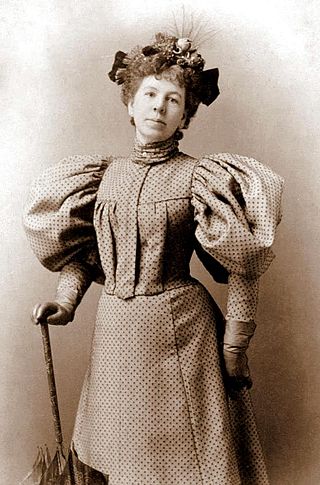
Clara Shortridge Foltz was an American lawyer, the first female lawyer on the West Coast, and the pioneer of the idea of the public defender. The Criminal Courts Building in downtown Los Angeles was renamed after her in 2002, and is now known as the Clara Shortridge Foltz Criminal Justice Center.

The number of women in the United States judiciary has increased as more women have entered law school, but women still face significant barriers in pursuing legal careers.
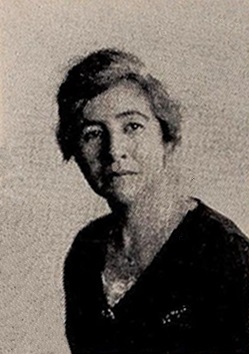
Miriam Van Waters was an American prison reformer of the early to mid-20th century whose methods owed much to her upbringing as an Episcopalian involved in the Social Gospel movement. During her career as a penologist, which spanned most of the years from 1914 through 1957, she served as superintendent of three prisons: Frazier Detention Home for boys and girls in Portland, Oregon; Los Angeles County Juvenile Hall for girls, and the Massachusetts Correctional Institution – Framingham, then called the Massachusetts Reformatory for Women. While in California, Van Waters established an experimental reformatory school, El Retiro, for girls age 14 to 19. In each case, Van Waters developed programs that favored education, work, recreation, and a sense of community over unalloyed incarceration and punishment.
The Legal Aid Society of Cleveland is a legal aid society in Cleveland, Ohio established in 1905. It helped pioneer a nationwide legal aid movement whose leaders held to a simple but profound principle: that rich and poor alike are entitled to equal treatment under the law.

Texas RioGrande Legal Aid formerly Texas Rural Legal Aid (TRLA) is a nonprofit agency that specializes in providing free civil legal services to the poor in a 68-county service area. It also operates a migrant farmworker legal assistance program in six southern states and a public defender program in southern rural counties of Texas. Established in 1970, TRLA is the largest legal aid provider in Texas and the second largest in the United States.

Kim McLane Wardlaw is an American lawyer and jurist serving as a U.S. circuit judge of the U.S. Court of Appeals for the Ninth Circuit since 1998. She is the first Hispanic American woman to be appointed to a federal appeals court. Wardlaw was considered as a possible candidate to be nominated by Barack Obama to the Supreme Court of the United States.
Legal aid in the United States is the provision of assistance to people who are unable to afford legal representation and access to the court system in the United States. In the US, legal aid provisions are different for criminal law and civil law. Criminal legal aid with legal representation is guaranteed to defendants under criminal prosecution who cannot afford to hire an attorney. Civil legal aid is not guaranteed under federal law, but is provided by a variety of public interest law firms and community legal clinics for free or at reduced cost. Other forms of civil legal aid are available through federally-funded legal services, pro bono lawyers, and private volunteers.

Nimfa Cuesta Vilches was a Senior Deputy Court Administrator (DCA) at the Office of the Court Administrator (OCA), Supreme Court of the Philippines. She was a regional trial court judge in Manila until her appointment as Assistant Court Administrator in 2006 and as DCA in 2008. She was a family law expert in the Philippines and in the international legal community.
Robin Ann Sax is an author, lawyer, clinical therapist, legal analyst, radio host, an HLN contributor, and a former prosecutor for the State of California, County of Los Angeles and Riverside County District Attorney's Office.

Aurora "Lola" Greene Baldwin was an American woman who became one of the first policewomen in the United States. In 1908, she was sworn in by the City of Portland as Superintendent of the Women's Auxiliary to the Police Department for the Protection of Girls, with the rank of detective.

Ángela Acuña Braun, also known as Ángela Acuña de Chacón,, a Costa Rican lawyer, women's rights pioneer and ambassador, was the first woman to graduate as a lawyer in Central America. Orphaned at the age of 12, she was raised by her maternal aunt and uncle, attending elementary school and beginning high school in Costa Rica. She continued her education in France and England, gaining exposure to the ideas of women’s rights. Returning to Costa Rica in 1912, she published articles in support of women's equality. She attended the boys' lyceum or high school where she passed the bachillerato, a prerequisite for entering law school. She embarked on law studies in 1913, leading to a bachelor's degree in 1916. As women were barred from entering the profession, Acuña immediately presented a reform to the civil code allowing this, which was adopted.
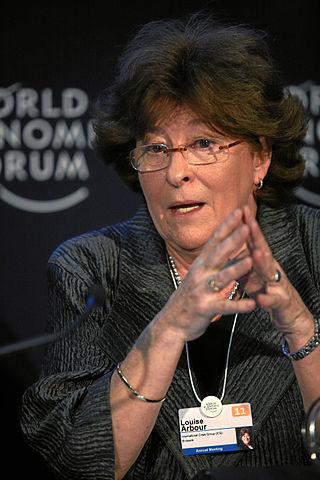
Women in law describes the role played by women in the legal profession and related occupations, which includes lawyers, paralegals, prosecutors, judges, legal scholars, law professors and law school deans.

Georgia Philipps Bullock was the first female Superior Court judge in California.

Georgia Ann Robinson was an American police officer and community worker who was the first African American woman to be appointed a police officer at the Los Angeles Police Department (LAPD); she was also one of the first Black policewomen to be hired in the country. She joined the force in 1916 as a volunteer jail matron and was appointed an officer in 1919. She worked on juvenile and homicide cases, as well as cases with black women. She often referred the people she came in contact with to social agencies. Her police career ended when she permanently lost her sight after being injured by a prisoner. Robinson was also an activist who founded the Sojourner Truth Home, a shelter for women and girls, while working on the force. After retiring, Robinson continued her community activism, working with the NAACP, volunteering in shelters, and campaigning to desegregate schools and beaches. She was married to Morgan Robinson, and had a daughter, Marian. She died in Los Angeles at the age of 82.
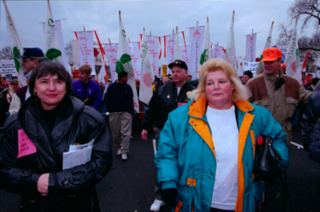
Sandra Cano, better known by the legal pseudonym "Mary Doe," was the plaintiff in the lawsuit case Doe v. Bolton (1970), the companion case to Roe v. Wade (1973) which legalized abortion in the United States. Cano held anti-abortion views and claimed she had been manipulated by her lawyer, Margie Pitts Hames. She repeatedly attempted to have the decision overturned. She also undertook anti-abortion activism, with Norma Jane McCorvey among others, and filed a Friend of the Court brief seeking to limit partial birth abortions.
References
- 1 2 "The Woman Who Has Come". digital.library.upenn.edu. Retrieved 2020-01-25.
- 1 2 3 4 5 6 7 8 Jordan, Gwen (2015-01-01). "Radical women and the development of legal aid societies in Chicago and Los Angeles, 1886-1914". Journal of Gender, Race and Justice. Retrieved 2020-01-23.
- ↑ Batlan, Felice, 1965- (5 May 2015). Women and justice for the poor : a history of legal aid, 1863-1945. New York, NY. ISBN 978-1-107-08453-7. OCLC 897001833.
{{cite book}}: CS1 maint: multiple names: authors list (link) - ↑ Norgren, Jill. (2013). Rebels at the bar : the fascinating, forgotten stories of America's first women lawyers. New York: New York University Press. ISBN 978-0-8147-5863-2. OCLC 827947201.
- ↑ "Juvenile Justice Reform". www.encyclopedia.chicagohistory.org. Retrieved 2020-01-23.